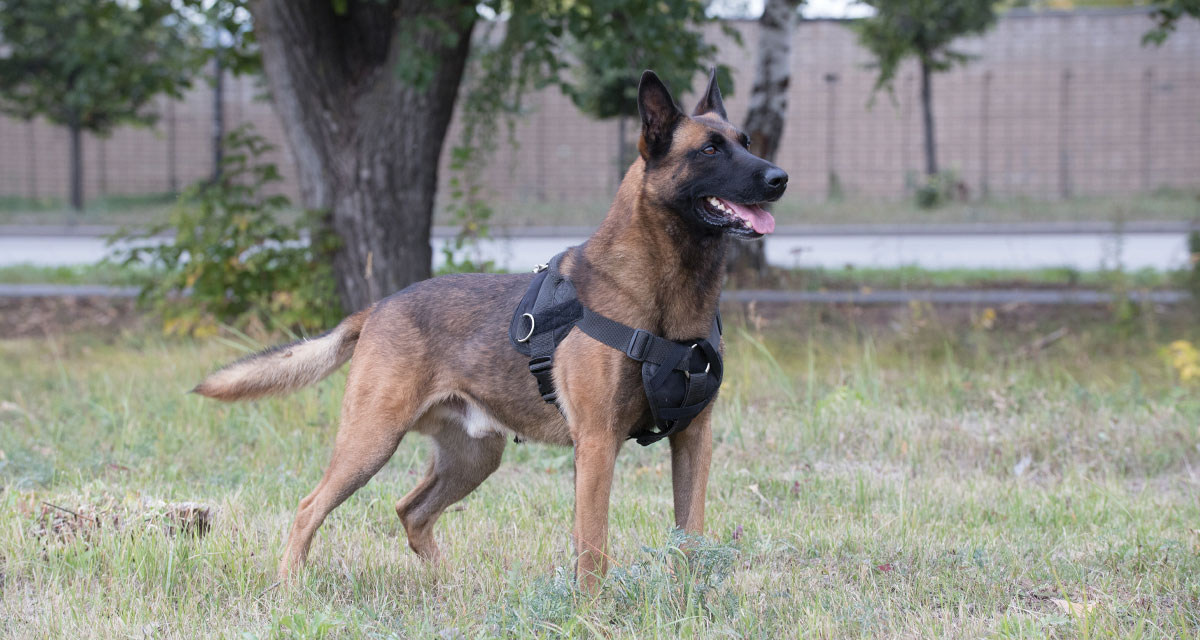What does it take to fulfill the high expectational standards of the United States military war dog program? Only specific breeds possess the intelligence and drive to engage in brave acts directed by their handler. Eighty-five-percent of all military working dogs, MWD, come from countries that breed world-famous canine lines. Before newborns open their eyes, puppies spend the first ten weeks with “Puppy Development Specialists” before departing for certified foster families. By month seven, German shepherds, Belgian Malinois, and retrievers say goodbye to puppyhood and begin training.
Fact: A dog has an olfactory sense 40 times stronger than a human. The Labrador, golden, and Chesapeake Bay retrievers make ideal canines for the task of detecting mines and bombs!
Selected for Dog School
Puppies are stubborn animals that often have bad days. They respond to feelings of stress and sometimes resort to the unforgivable act of biting a human. Fifty-percent of all puppies cross the fine line between aggression and excitability. Some puppies that fail the program return to live with foster families or join new homes, while others enter an alternative training program with new handlers. Earning the coveted title of MWD leads to an extensive eight-month program with the goal that certifies canines as mission-ready.
Fact: Where do you choose to work? Is it a location that’s quiet and without distraction? In training, canines need exposure to a variety of environments to follow orders. Imagine trying to concentrate in a bustling city or room without walls! Once dogs become proficient in basic commands, such as “Sit!” “Stay!” “Down!” and “Heel!” the next step is to follow orders, regardless of the location or circumstances.
The Obedience Course
The only way the mind and body can navigate small puzzles and challenges is to engage in physical and mental acuity tests. The military working dog is no exception. At Fort Belvoir, Virginia, a specialized course allows dog teams and their handlers to engage in obedience, search, and controlled aggressive training eight hours weekly. Activities may focus on one valued command, “Stay!” Over time, K9s learn specific skills, such as guarding entry control points, searching for explosives and drugs, or subduing enemy combatants.
Fact: The four-legged friend acquiesces to the family’s behavior and actions. He or she understands time and schedule from a morning feeding and walk to post-dinner cuddles in front of the television. Alphas are protectors who interpret actions and movements through body language. It could be a head tilt, a raised foreleg, or the appearance of impatience, frustration, and anger. In exercises where K9s must track and locate a fleeing subject, perhaps on the street or through wooded areas, handlers must give orders through single- or double-syllable words, assess performances, and revisit techniques to ensure strategies are near perfect!
Certification Process
Partnerships require time, trust, and play to form a deep connection. To fulfill certification requirements and achieve a partnership, the kennel master assembles real-life detection training scenarios. Across one week, teams conduct search operations from intricate, small rooms to large warehouses. In real-world exercises, teams must follow the protocol of search tactics and procedures to rescue an individual or find narcotics.
Fact: Every military working dog is a non-commissioned officer, NCO, and provided with one rank higher than his handler to ensure that any mistreatment of the K9 is classified as an assault of a higher-ranking officer.
Adopting a Military Dog
According to the United States Department of Defense, 2,700 working dogs are serving active-duty assignments. Ninety percent all war-dogs remain with their handlers, while 10% go to police departments or are adopted by the military or civilians. One organization, the Warrior Dog Foundation, ensures K9s have a sanctuary to live out their days of retirement with a forever family! Retirement usually occurs by years 10 to 12 due to physical or mental injury, age, or a handler’s retirement. Since 2013, the WDF has rehabilitated and re-homed over 170 K9s.
Fact: Not all agencies request retired military dogs go to a trained handler; most times, a K9 requires a happy, loving home!
Research a K9 organization that speaks to you and start helping!



















